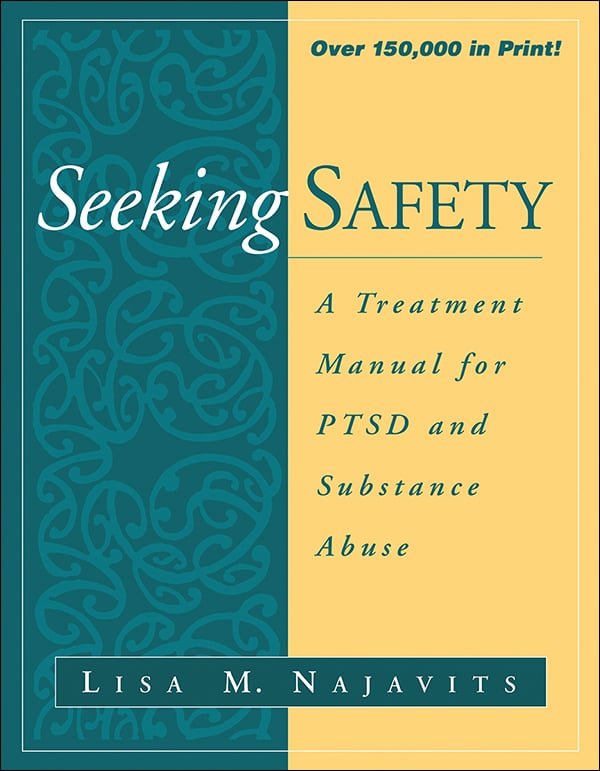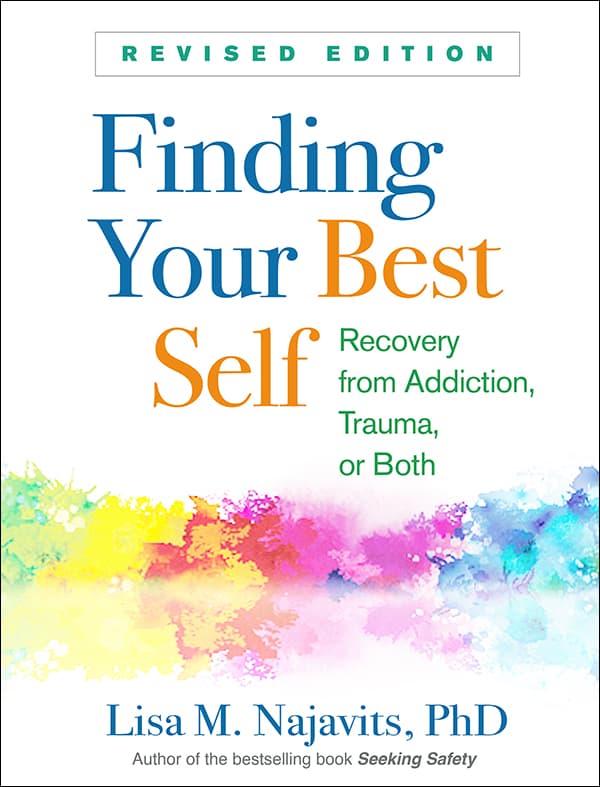Therapy
Seeking Safety Therapy for Substance Abuse and Trauma
THC Editorial Team December 31, 2022

Contents
- Overview
- What Is Seeking Safety Therapy?
- Potential Benefits and Effectiveness of Seeking Safety Therapy
Substance abuse refers to a pattern of using substances (alcohol or other drugs) that causes significant distress and negative consequences. According to a 2018 Substance Abuse and Mental Health Services Administration (SAMHSA) survey, over 20 million Americans aged 12 and older reported having a substance abuse disorder.1 Trauma is the body and mind’s response to a highly distressing event that can cause shock, denial, and grief. Whereas most people can recover naturally from a traumatic experience, in those affected by posttraumatic stress disorder (PTSD), memories of the traumatic experience can cause debilitating emotional stress that interferes with everyday activities and relationships with loved ones. Often, substance abuse and trauma co-occur, making treatment more challenging.
In people receiving substance abuse treatment, 12–34% percent have existing PTSD. For women, it is 33%–59%. Often, men with co-occurring substance abuse and PTSD tend to have war or crime-related traumatic experiences, while women with both substance abuse and PTSD tend to have a history of abuse in childhood. In most cases, the trauma occurs prior to the substance abuse.2
Seeking Safety is a public health-oriented program that addresses posttraumatic stress disorder (PTSD) and substance use disorder (SUD) simultaneously.3 Seeking Safety has been practiced for over two decades with success with individuals from many walks of life, including those with serious mental illnesses, people with severe diseases such as HIV/AIDS, homeless individuals, and people who have been incarcerated.4
What Is Seeking Safety Therapy?
Seeking Safety is an evidence-based form of therapy that can simultaneously address substance abuse and PTSD in individuals.3 The treatment can help clients achieve “safety” from the challenges caused by trauma and/or addiction.5 The program is geared to present circumstances; it does not dwell on the sometimes painful recalling of traumatic memories and events.3 The emphasis of Seeking Safety is to provide psychoeducation, help people recognize and “own” the trauma and/or substance abuse condition, and develop practical coping skills to manage these conditions.5
The Seeking Safety treatment manual provides instructions for administering individual lessons and handouts of each skill for participants.5 It can be delivered individually or in groups of any size.3 The book has been translated and used in countries around the world. Permission to translate it into additional languages is also available.3 Professionals and peers have used the program successfully in a wide range of environments. Training is not required to administer the program but is readily available in many formats.3
Five Principles of Seeking Safety
Seeking Safety is based on the following five principles:5
- Safety is the primary goal. The therapist aims to help the client become free of self-destructive and dangerous patterns and behaviors.
- Simultaneous treatment of substance abuse and PTSD. This combined treatment model helps clients understand the relationship between the two conditions and ways to address both.
- Emphasis on ideals. Rebuilding a client’s trust and faith in values and virtues, such as honesty, self-care, and respect, is key to recovery.
- Focus areas include cognitive, behavioral, interpersonal, and case management. Therapy integrates these four approaches to help clients achieve the best outcome.
- Attention to therapist processes. This refers to the therapist’s relational skills, listening ability, sense of compassion, behavior modeling ability, and ability to empower the client.
Seeking Safety Therapy Topics
Seeking Safety comprises 25 topics covering interpersonal, cognitive, behavioral, and case management areas. These are:6
Interpersonal topics
- Honesty
- Asking for Help
- Setting Boundaries in Relationships
- Getting Others to Support Your Recovery
- Healing From Anger
- Healthy Relationships
- Community Resources
Cognitive topics
- PTSD: Taking Back Your Power
- Compassion
- When Substances Control You
- Creating Meaning
- Discovery
- Integrating the Split Self
- Recovery Thinking
Behavioral topics
- Taking Good Care of Yourself
- Commitment
- Respecting Your Time
- Coping with Triggers
- Self-Nurturing
- Red and Green Flags
- Detaching from Emotional Pain (Grounding)
Combination topics
- Introduction/Case Management
- Safety
- Life Choices
- Termination
The History of Seeking Safety
In 1992, Lisa M. Najavits, Ph.D., a clinical psychologist at Harvard Medical School and McLean Hospital, received a grant from the National Institute on Drug Abuse to design a program to treat SUD and PTSD simultaneously and by the same therapist.3 In 2002, the Seeking Safety manual was published after ten years of clinical research, application, and training.
Implementation of Seeking Safety
Seeking Safety provides affordable, cost-effective help to people with PTSD and SUD. The program is flexible, works well for early treatment, and relies on a logical approach to problem solving.3 It is designed to be provided in 25 sessions but is flexible enough to be provided in a shorter or longer format.6
The American Psychological Association recommends Seeking Safety for use with vulnerable groups from all segments of society, including:7
- teens and young adults
- military members and veterans
- victims of domestic violence
- people who are homeless
- people in the criminal justice system
- people with learning disabilities, mental illness, or limited education
- various ethnic or racial groups
Although it was designed for co-occurring PTSD and SUD, Seeking Safety is also effective for individuals with varying degrees of either condition alone. It is available in 14 languages: German, French, Spanish, Swedish, Dutch, Chinese, Greek, Arabic, Italian, Japanese, Portuguese, Vietnamese, Korean, and Polish.8
The model’s emphasis on public health makes it suitable for use with a wide range of practitioners:7
- social workers and mental health counselors
- substance use counselors
- medics and emergency personnel
- case managers
- psychologists
- nurses
- paraprofessionals
- peer-led groups
Several years after developing the program, Najavits provided tips for implementing it.3 She stressed the importance of offering multiple coping skills, keeping the group safe for all, and limiting the discussion to relevant topics. Honesty, encouragement, and acceptance create an environment where participants feel safe learning how to cope with trauma and SUD.9
The Potential Benefits and Effectiveness of Seeking Safety Therapy
Seeking Safety was the first therapeutic model designed to treat concurrent PTSD and SUD. It is also the most widely used and researched. Over 400 studies on the model suggest it is an effective form of treatment. Four studies are briefly summarized here:
- A qualitative study conducted in 2016 examined intergenerational trauma and substance abuse among Aboriginal people in Canada. Using indigenous healing practices and Seeking Safety techniques improved participants’ health and well-being.10
- A 2017 study examined Seeking Safety’s effectiveness when used with a traditional 12-step recovery program. Researchers found significant improvements in clients’ self-reported coping skills.11
- Research in 2015 examined the efficacy of Seeking Safety in a group of Australian prisoners with severe PTSD and SUD. Based on the findings, the researchers described the program as “desirable, acceptable, and feasible among male prisoners with a history of substance abuse and trauma.”12
- A 2008 study suggested that Seeking Safety may be effective in interventions with homeless women and could be implemented by caseworkers. It is unclear from the findings whether the benefits occur only with Seeking Safety or if other psychotherapeutic services could achieve similar results.13
Other research shows the benefits of Seeking Safety for homeless youth,14 veterans,15 and women experiencing depression postpartum or during pregnancy.16















